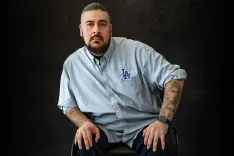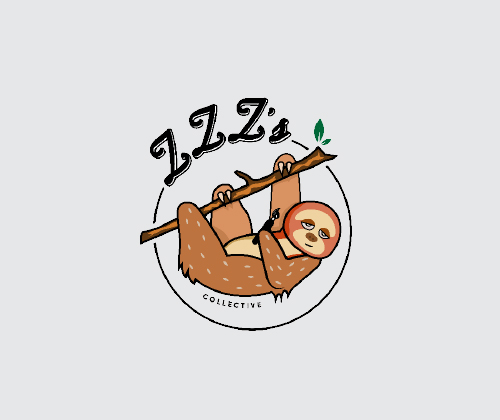The Uncrowned King of Radical
An Ode to a Revolutionary
Written By: ROB HILL Illustration By: LENA ROOT

In the mid-1970s, most editorial staff meetings at High Times magazine began with the founder, a V for Vendetta-like anti-hero, the mercurial Tom Forcade, screaming in his signature black cape, tailor-made wide-brimmed cowboy hat, and black moccasins, announcing from behind his minuscule desk: “There’s a cop here….we just don’t know which one of you it is.”
It was May of 1974 and President Nixon’s War on Drugs was at its height. The first issue of High Times was rolling off the presses. A magazine celebrating the counterculture high life that Nixon cronies wanted to silence. The launch party was a sordid affair. Held at the shabby chic Gramercy Park Hotel, it was more like a high school party than a Big Apple glossy magazine launch. There were numerous nitrous oxide laughing gas tanks, massive jugs filled with cheap wine, and people dressed in hippie attire smoking big blunts of Jamaica’s finest weed. To the press that did come, the question hanging in the smoke-filled air was:
Is there a market for a glossy magazine for stoners?
In a month they had the answer.
The magazine sold out—even though almost all magazine distributors refused to carry it. (Forcade wound up using Hustler magazine publisher Larry Flynt’s new distribution company.) Indeed, the twenty-something Forcade was following in the footsteps of outlaw magazine publishers like Playboy’s Hugh Hefner, Rolling Stone’s Jann Wenner and Flynt—influencing culture, entertaining millions, getting rich, and antagonizing the establishment.
“It’s like trying to ride a rocket,” Forcade quipped to colleagues as he introduced the second issue of High Times. “This…is a license to print money.”
ROCKET MAN
The circulation almost doubled for each successive issue. Forcade’s formula was simple but brilliantly layered: create a sort of 70s version of the popular Pulp magazines, but center it around what millions of new potheads wanted to read—exposés of exotic drug busts, interviews with whistleblowers of the CIA and FBI, ratings for the best cannabis strains, how-to tutorials on growing shrooms, hallucinatory cartoons, profiles on young tech rebels like Apple co-founder Steve Jobs, and, of course, instructions for millions of young adults on how to grow their own weed.
Moreover, Forcade reimagined the Playboy centerfolds he loved as a teenager: instead of a naked woman, High Times would fetishize the voluptuous and often striking beauty of the cannabis sativa plant—seductive swirls of purples, magentas, pinks, greens, and frosting that made readers hungry for more.
Hundreds of thousands of subscriptions poured in from libraries, government agencies, and consumers all over the country. Against all odds, the magazine was a huge success. Forcade told interviewers: “The magazine isn’t about drugs. It’s about getting high…”
Not only was the start-up magazine making a lot of money, Forcade set up the first of what would come to be known as the “cannabis dispensary” on the second floor at 714 Broadway in New York City, supplying weed to the glitterati of the Big Apple. At its height, it was making fifteen-thousand dollars a day. But as it all climbed to dizzying heights, Forcade began to fracture, burn, and crash back down to Earth.

THE METAMORPHOSIS
Kenneth Gary Goodson, aka Thomas King Forcade, was born in Phoenix, Arizona, the son of a military engineer contractor. Everyone called him Junior. He was short, quiet, and had piercing blue eyes. Always looking for an adventure, he began racing hot rods as a young teen, oftentimes being chased by siren-blaring cop cars. Growing up, he was an unlikely figure to be the swashbuckling Pied Piper of cannabis media and legalization.
Despite his drag-racing proclivities, he was raised in a conservative Mormon home; he didn’t drink, smoke, or do drugs. He was a spoiled military brat, flitting from Okinawa to Alaska to Greenland. But he saw a business opportunity: smuggling massive truckloads of the “happy weed” across the Mexican border. He was good at it—and fell in love with the plant. He’d quip:
“There are only two kinds of pot dealers… Those that need fork lifts and those who don’t. I’m the kind who needs a fork lift.”
However, Junior was much more than a first class weed smuggler. Keith Stroup, the founder of the National Organization for the Reform of Marijuana Laws (NORML), noted that Forcade was a talented writer and wanted to get into counterculture media to help legalize cannabis. Forcade would go on to help found NORML; he and Stroup became fast friends.
In 1967, he changed his name and persona and began taking LSD, mushrooms, and smoking copious amounts of cannabis.
In one of his favorite memories of Forcade, Stroup recounted that he’d traveled to see Tom in New York City to get some cash he needed to meet payroll at NORML. “When I called him, he said, sure, he would help. But I would need to come to his place in the city. When I arrived, I was somewhat surprised to see the entire apartment filled from floor to ceiling with bales of weed. Tom and I did our business in the few feet available at the front of the apartment. He handed me a package with $10,000 in cash neatly wrapped.”
Forcade briefly served in the Air Force, but, feigning insanity, was dishonorably discharged before he could be dispatched to Vietnam. In 1967, like millions of young adults, he caught the Summer of Love fever and began ingesting LSD, mushrooms, and copious amounts of cannabis. He grew his hair long, sported a handlebar mustache, and moved into a commune. When the commune was raided and some members arrested, he became politicized—and the paranoia began to set in.
He changed his name to Thomas Forcade and began publishing a drug-culture journal called Orpheus. He published it from the 1946 Chevy school bus he drove around Arizona to avoid the “fuzz.” The name Forcade was an intentional play on the word “facade”—a wink to the initiated that it was an alias. Forcade lived in the moment and made decisions on a whim.

SEX PISTOLS, HUNTER S. THOMPSON & ARMAGEDDON
In 1970, Forcade became the first activist to use pieing as a form of protest, hitting Chairman Otto Larsen during the President’s Commission on Obscenity and Pornography. (Forcade showed up in a limousine painted in the colors of the Viet Cong flag to testify, with an empty 12-inch anti-aircraft shell strapped to his leg.) That summer, Forcade agreed to join the Medicine Ball Caravan, a traveling troupe of musical acts and hippies financed by Warner Bros., which planned on turning the extravaganza into a Woodstock-style documentary. A French film crew would film twenty vehiclesʼ worth of musicians, dealers, hustlers, and just plain zonked-out stoners on their three-week patchouli-scented reality show. Ever the prankster, Forcade bought a 1965 Cadillac limousine which he effectively transformed into a mobile concert facility, welding a steel and plywood stage onto the carʼs roof and also equipping the automobile with a plexiglass dome which served as a sound-mixing booth.
Forcade’s hijinks were noticed by fellow counterculture heroes. In September, he visited Newport to witness—and disrupt—the Americaʼs Cup sailing contest with gonzo journalist Hunter S. Thompson. Forcade chartered a yacht, raised the Jolly Roger flag, and planned to charge into the race. On the first night at sea, the Coast Guard boarded the ship and arrested Forcade, who had brought along his Minuteman speaker system and tapes of the MC5 for disturbing the peace. Thompson was impressed: “I like his goddamn style!”

Forcade’s style of politics during his early political work was confrontational “street theater” and “in your face” tactics. For instance, during the aforementioned Senate Commission on Obscenity, he denounced the “ancient myths of sterile blue laws” for several minutes in a stream-of-consciousness diatribe, finally concluding, “So fuck off…and fuck censorship!”
In one of his last adventures, Forcade teamed with a young filmmaker to make a documentary about the Sex Pistols’ 1978 tour of America despite opposition from the band’s record company. According to the label’s director of artist relations, Ted Cohen, “Forcade wanted to do a pirate documentary, a rebel documentary. Forcade thought the Sex Pistols were the first sign of Armageddon and complete disillusionment with the American government, and this was going to be the beginning of chaos.”
"Let’s start a magazine about getting high. What Playboy has done for sex we will do for weed."
When the film crew was accosted by the Pistols’ roadies at a show, Forcade’s chauffeur pulled out a gun. Later, according to one account, Forcade considered kidnapping the band’s heroin-addicted bassist, Sid Vicious, and smuggling him into Jamaica so he could attend rehab. Eventually, the band split up before the documentary could be completed.
Forcade began warning everyone: “Don’t trust anybody but a radical, because only a radical has got the guts to stand up on his hind legs and say where they’re at. Turn off the evil crap of the media. Read only the underground press.”
TOM’S ULTIMATE TRIP
In the summer of 1974, Forcade founded High Times magazine, funded with the money he made off being a top-flight marijuana dealer. The cover of the first issue (now worth $250 on eBay) was a turquoise and silver art deco photo of a woman wearing a flapper hat and seductively eating a shroom. Cover lines blazed:
A LADY DEALER TALKS; MARIJUANA A WONDER DRUG; HEMP PAPER RECONSIDERED; TIMOTHY LEARY’S ULTIMATE TRIP.
Every day was an exhilarating and stressful adventure at High Times. Depending on who you talk to, the name High Times was either conceived at a farmhouse in Florida during an LSD trip, or by Forcade and a bunch of friends sitting around inhaling nitrous oxide. Someone exclaimed:
“Hey, why not start a magazine about getting….high. What Playboy has done for sex we will do for weed!”

After the second issue sold out, a staffer noticed that Forcade, now dressed in his signature “dark weed priest chic” uniform of a widebrimmed hat, black cape, black jeans, and black moccasins, looked very depressed. He asked him what was wrong and Forcade confided in him that he was diagnosed as a manic-depressive. He reached into his pocket and dug out a mountain of pills: Quaaludes, Valium, Vicodin, Codeine, Dexedrine, Dexamyl, uppers, downers, LSD, etc.
But there was no time for self-reflection. The rocket was blazing to new heights. Forcade had caught lightning in a bottle with High Times—and became a marked man. It quickly became a 10-million-dollar a year business. And that didn’t count the cannabis he was selling out of the loft in midtown Manhattan, where the prices were elaborately written on a blackboard: $350 for a pound of Colombian Gold. A staffer noted, “He’s got a safe in there the size of a VW Bug.”
“I WAS JFK’S DEALER!”
Like Playboy, the magazine discreetly arrived in your mailbox in a black bag. A note inside said:
THE MAILING LIST IS ENCODED AND KEPT IN A WAX SEALED ENVELOPE IN THE SAFE OF A LAWYER WHOSE NAME IS KNOWN ONLY TO THE PUBLISHER.
Editorially, the magazine was a seductive blend of cutting-edge and well-written articles such as “A Visit to the Colombian Pot Fields,” “Pyramids & Ancient Highs,” “Training the Pet Pooch,” “Getting High in the Year 2000,” “I Was JFK’s Dealer,” “Child Pot Smokers in Their Own Words,” and “Confessions of a Narc.” Forcade secured an interview with the Dalai Lama and flew a writer and photographer to India for the assignment. (Interviewer: “Have you ever smoked cannabis?” Dalai Lama: “No…enlightenment should be curried by the full alert mind.”) The magazine became an essential tool not only for readers, but also for paraphernalia manufacturers, distributors, head shops, and rolling paper companies. Forcade quipped to New York magazine that we “figure we’re getting in below the ground floor of a new industry. By the time weed is legal, we’ll be firmly established.”

JEKYLL, HYDE, TOM & JUNIOR
But the whirlwind of success was beginning to affect him. He stopped sleeping. He would disappear for weeks, leaving fat envelopes full of cash to pay the magazine’s bills. In his increasing paranoia that his staff would be arrested, he set up a shadow staff for High Times. Staffers never knew which Tom they would encounter: the worried, screaming maniac or the counterculture anti-hero full of confidence and conviction. Forcade began bringing his shotgun and pistol to the office. He announced to the staff that, “There’s a tripod gun set up in my office! Don’t ever go in there or you will be shot.”
Forcade had reason to be paranoid: his lawyer had informed him that he was under FBI surveillance. His makeshift cannabis dispensary was raided and shut down. He confided to his lawyer, “Of course I’m scared. How would you feel if you knew your employees were out to get you. I am not a martyr.”
Forcade stopped going into the office and holed up at the Fifth Avenue Hotel, room 214. He would frequently call the office, zonked out of his mind, threatening to fire everyone. High Times’ editors and assistants would ferry copy, page layouts, and proofs for him to approve. He looked gaunt and haunted. A friend called, concerned for his well-being. Forcade explained: “I am hiding out from the Feds.”
He had changed physically, too. Gone was the Bolero hat; his wild mustache neatly trimmed; his hair shorn; and he began wearing bespoke 3-piece pin-striped suits. “He looked like someone going to trial,” noted a staffer.
1976 began with a bang: A pricey gargantuan High Times billboard on Sunset Blvd. They had to hire extra staff to deal with all the subscriptions pouring in. But Forcade was making powerful enemies. He paid in-the-know writers lavishly to get the inside scoop on the corrupt CIA, doing stories on Operation Dragnet, Operation Buccaneer, and Project Stargate—all illegal black-op programs. To be sure, High Times was the first conspiracy theory glossy magazine. People loved it—the establishment loathed it.
After coming home one night to find cops rummaging around in his hotel suite, Forcade called his general manager and said, “Look, I am leaving for awhile. You are not going to be able to get ahold of me. You are in charge, you sign the checks.”

MIAMI VICE
Forcade was off to the sweltering swamps of Florida to reel in “The Big One.” The swashbuckling publishing magnate was picking up two tons of choice Santa Marta Gold cannabis, thirty miles off the coast of Florida. Just as the exchange happened, helicopters buzzed from above and cop cars swarmed. Forcade and his buddies dispersed into the Everglades, now drug-smuggling fugitives, hiding in a mosquito and snake-laden safe house. After two months, Forcade returned to New York—his actions more erratic than ever.
He began screaming at the staff, ripping up layouts, throwing furniture, and storming off muttering, “If you can’t get it right, I’ll find someone else to do it.” When he began a firing spree, he’d say after delivering the bad news, “You have 30 seconds to get out of here.” He began to break out in hives. One staffer remarked, “Tom would come in like a dark cloud. It seemed like either Tom was going to come in and kill us, or the police were going to come and arrest us.”
The one time the staff saw him happy and relaxed was when the issue arrived in which a High Times reporter had gotten the President of the United States, Jimmy Carter, to say that cannabis should be legalized. However, Forcade became obsessed that the magazine not lose its radical roots. He would sit in his massive office behind a teeny desk, two bulky speakers on both sides, blaring the Rolling Stones, and bark at his staff that… “making money is not enough, we need political power.”
Afraid for his life, Forcade hired a bodyguard, Jack Combs, an amiable, hulking weed dealer from Kentucky. Shortly after, Forcade got into a brutal fistfight and began breaking antiques at a fundraising party for NORML. Combs resigned. The next morning Forcade called the High Times’ offices and told his general manager to fire everyone. He whispered into the phone:
“Collect all the money from the people that owe us money. Sell all the furniture and typewriters. We are closing down the magazine. It’s become too successful and gotten away from its roots.”
A half hour later, a crazed Forcade emerged from the elevator, walked up to the receptionist and ripped the phone switchboard out and threw it through a window. “You can go home,” he told the terrified receptionist. “High Times is closed!” Then he vanished. A few days later he sheepishly called his GM and said, “Ok, we aren’t closing it but I want all employees who work here for ten years to become shareholders. The magazine will be owned by its workers.”
P FOR (PRINT) , POT, PROFITS, PUNK & PARAQUAT
Despite all the drama, the magazine was selling over 500,000 copies a month, more than Rolling Stone. Suddenly, a who’s who of pop culture royalty began to take the magazine seriously. They landed interviews with Andy Warhol, Debbie Harry, Mick Jagger, and Johnny Rotten. Forcade bought Punk and Vamp magazines. High Times fought its way to gain press access to the White House, and even shadowed the First Lady to Colombia. Upon hearing of this, Forcade wept with joy.
He began spending a fortune sending writers all over the globe to find exotic and exclusive articles. If there was a war between rival drug dealers in Honduras, he’d dispatch a writer and photographer to check it out. If a bounty had been put on a drug lord’s head, a writer would jaunt off to a distant land.
But then Forcade poked the wrong bear.
The publisher assigned out a 6-page story about the government spraying the toxic pesticide, paraquat, on cannabis fields, that was allegedly giving cannabis users lung cancer. The story was picked up by the mainstream media and the USDA was furious. President Carter kicked the magazine out of the press room. Saturday Night Live did a sketch about Mexican weed growers getting paraquat dumped on them.
STONED MOVIE PRODUCERS & PANAMA RED
By 1978, things began to get surreal. Geraldo Rivera came to the office to do a piece on the magazine. When the ABC interview exposé ran in primetime, viewers saw the first person to ever do cocaine on TV.
When fellow renegade publisher— and High Times’ distributor—Larry Flynt was found shot by “government agencies,” Forcade was shaken. He told a colleague: “Don’t walk down the street with me. If someone takes a shot I don’t want you to get hit. I feel like, in the end, I’m gonna get bumped.”
Despite his often foul and gloomy mood, cannabis legalization, his ultimate dream, was making strides. By 1978, eleven states had decriminalized what was then widely referred (I have another story) to as marijuana. On a whim, he went out to Hollywood to pitch his ideas for weed-themed movies.
He did cocaine and smoked Panama Red cannabis at sun-splashed poolside bungalows pitching movies to stoned Tinseltown producers. After a month-long bender, he became depressed again. Thanks for the party Forcade but we’ll be passing on your projects, was the message…and, oh, send some more of that Panama stuff. Thanks.
He solemnly flew back to cold New York City to lick his wounds of rejection.
MORE THAN POT PORNOGRAPHY
At times, Forcade’s charming sense of absurdist humor would come to light. The company he formed as official publisher of High Times was dubbed the Trans-High Corporation, or THC—the acronym for tetrahydrocannabinol, the psychoactive ingredient in cannabis. Its official icon was the P-38, a twin-tailed World War II fighter which Forcade re-envisioned as the ultimate smuggler plane.
In his brighter moments, he quietly provided seed money for many new additions to the APS Publishing Network around the country—from gay and feminist publications to the burgeoning ecologist, anti-nuclear, and Native American press.
Ever the impulsive entrepreneur, he opened his own bookstore in SoHo called New Morning. He dated here and there, had his fling with drugs, wrestled often with depression, and was rich. But Forcade’s favorite muse was his beloved magazine.
Until his tragic death at thirty-three years old, he proudly maintained that “High Times contained intelligent journalism, not just pot pornography.”
When asked what motivated him, he whispered, "I have a deep fear of killing myself out of boredom.
THE KING IS DEAD, LONG LIVE THE KING
Before his death, an on-and-off girlfriend interviewed Forcade on tape. He spoke about his ongoing dreams of building a viable alternative press, about his paranoia of government surveillance. “Effectively, I’ve already spent the last ten years in jail—I’ve been under such close surveillance,” he lamented. Moreover, he denied ever breaking any laws. “My only crime is not agreeing with the straight media.” He boasted of his voracious reading and work habits. When asked what motivated him, he whispered: “I have a deep fear of killing myself out of boredom.” On November 16, 1978, Thomas Forcade shot himself in the temple with his favorite pearl-handled .22 pistol. Friends were not surprised. Forcade told them he hadn’t been sleeping and was being followed by mysterious black vans. Rumors abounded that Forcade, himself, was an undercover CIA agent and narc. That the magazine was funded by the Mafia. That the FBI killed him. The magazine changed hands many times over the years; it strayed from Forcade’s radical vision in the mid-1990s, and eventually filed for bankruptcy in 2024 due to mismanagement.
AS HIGH AS POSSIBLE
Thomas K. Forcade was a lightning-rod counterculture revolutionary. He built the first cannabis media empire, taught millions of people how to grow cannabis—and get high!—during the zenith of the government’s War on Drugs. He didn’t seek fame or fortune or the spotlight. I’d like to think cannabis gave him some moments of spiritual relief from his mental health struggles, glorious hours of clarity, creativity, calm, and prolific 3 a.m. writing sessions under pseudonyms. The High Times founder left no instructions regarding his funeral, so the magazine’s staff planned a memorial service at Windows on the World in the World Trade Center, so that those in attendance could get as “high” as possible.
Forcade was a complicated individual. He was, at once, a lot of things: a maverick publisher, a counterculture provocateur, a tyrant, a sweet benefactor, a cannabis smuggler, a prolific writer, a style icon, an unyielding activist, and, of course, the man who built High Times magazine. In just a few tumultuous and fevered years, the short Mormon kid from Arizona with ice-blue eyes and a devilish streak—Junior—made getting “high” part of the pop culture lexicon, and set the course for cannabis legalization. Upon his death, the magazine had a monthly circulation bigger than Mad magazine, National Lampoons, and Rolling Stone, and became the glossy counterculture bible for an antsy generation that dared to challenge the status quo. All of this was pushed forward by Forcade’s audacious spirit and spot-on instincts.
In the end, High Times did what all great magazines do: it delivered thrills, smarts, an unshakable vision—and became a cultural phenomenon. Delivered in a little black plastic bag.

Few names in cannabis history are as synonymous with rebellion, style, and bravado as Tom Forcade. Known for transforming the way the world sees cannabis and “getting high,” Forcade had a style that was the embodiment of “Man-in-Black outlaw chic”—a little rock n’ roll layered with urban cowboy cool. Here are six staples that defined his style:
Wide-Brimmed Cowboy Hat:
A Forcade hallmark, his hat never seemed to leave his head. Stetson.com
Cigarette Jeans:
He preferred them very skinny. Levi.com
Cassock Frock:
He adored his priest-like cape. Sesena.com
Moccasins:
Comfortable and hippie-chic, he rarely left home without them. MGemi.com
Double Breasted Leather Jacket:
A Forcade staple, his beloved jacket featured sharp shoulders. MrPorter.com
Mustache Wax:
He sculpted his iconic mustache with extra-strength wax. DeathGripWax.com

















